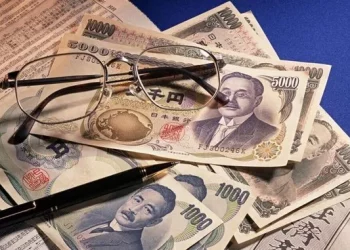In today’s globalized economy, understanding foreign exchange rates is crucial for investors and individuals alike. One commonly asked question is, “How much is 1,000 RMB to USD?” The exchange rate between the Chinese Yuan Renminbi (RMB) and the United States Dollar (USD) fluctuates due to various economic factors. This article explores the dynamics of this exchange rate, its historical trends, and the factors influencing currency values.
Understanding Currency Exchange Rates
What Is Currency Exchange?
Currency exchange refers to the process of converting one currency into another. It is essential for international trade, travel, and investment. When you travel abroad, you often need to convert your home currency into the local currency. For example, if you are traveling from the United States to China, you will need to convert USD into RMB.
What Is an Exchange Rate?
The exchange rate is the value of one currency in terms of another. It determines how much of one currency you can get in exchange for another. Exchange rates can be floating or fixed. Floating rates fluctuate based on market conditions, while fixed rates are pegged to another currency.
The Importance of Exchange Rates
Exchange rates play a vital role in the global economy. They affect the cost of imports and exports, influence inflation, and impact investment decisions. A strong currency makes imports cheaper but can make exports more expensive. Conversely, a weak currency can boost exports but increase the cost of imports.
The Chinese Yuan Renminbi (RMB)
Overview of the RMB
The Chinese Yuan Renminbi is the official currency of the People’s Republic of China. The term “Renminbi” means “people’s currency,” and it is abbreviated as RMB. The symbol for the Yuan is ¥. The currency has undergone significant changes since its introduction, particularly with China’s economic reforms.
Historical Context
The RMB was introduced in 1948. For many years, it was not freely traded. The Chinese government maintained strict controls over its value. However, in the early 2000s, China began to reform its currency system. These reforms led to the RMB being allowed to float within a controlled range.
Current Status
Today, the RMB is one of the most traded currencies in the world. It is also part of the International Monetary Fund’s Special Drawing Rights (SDR) basket. This inclusion reflects the growing influence of the Chinese economy on global markets.
The United States Dollar (USD)
Overview of the USD
The United States Dollar is the official currency of the United States and one of the most widely used currencies in the world. It is abbreviated as USD and symbolized as $. The USD serves as the world’s primary reserve currency, making it essential in global trade and finance.
Historical Context
The USD has a rich history. It was established in 1792 when the Coinage Act was passed. Over the years, it has undergone various changes, including the abandonment of the gold standard in 1971. Today, the USD is primarily fiat money, meaning its value is not backed by a physical commodity.
Current Status
The USD remains the dominant currency in international trade. Many commodities, including oil and gold, are priced in USD. This status contributes to the USD’s strength against other currencies, including the RMB.
How Exchange Rates Are Determined
Factors Influencing Exchange Rates
Several factors influence the exchange rate between the RMB and USD. These include:
Interest Rates: Higher interest rates offer lenders a higher return relative to other countries. As a result, higher interest rates attract foreign capital, increasing the currency’s value.
Economic Indicators: Economic health indicators, such as GDP growth, unemployment rates, and inflation, affect currency strength. A strong economy typically strengthens a country’s currency.
Political Stability: Countries with stable governments are more attractive to foreign investors. Political turmoil can lead to a decrease in currency value.
Market Speculation: Traders’ perceptions of future events can lead to fluctuations in currency values. Speculation can significantly impact exchange rates.
Supply and Demand: The basic economic principle of supply and demand also applies to currency values. If demand for a currency increases, its value will rise.
The Role of Central Banks
Central banks play a crucial role in determining exchange rates. They can intervene in the foreign exchange market to stabilize or increase the value of their currency. For example, the People’s Bank of China (PBOC) may take actions to control the RMB’s value against the USD to support its economic goals.
Current Exchange Rate for 1,000 RMB to USD
Finding the Current Rate
To determine how much 1,000 RMB is in USD, you need the current exchange rate. Exchange rates fluctuate continuously based on market conditions. As of this writing, let’s assume the exchange rate is 1 RMB = 0.14 USD.
Calculation Example
Using the assumed exchange rate, the conversion would be as follows:
Convert RMB to USD:
1,000 RMB×0.14 USD/RMB=140 USD
Thus, 1,000 RMB would be equivalent to 140 USD at the assumed exchange rate.
Variability in Exchange Rates
It is essential to note that exchange rates change frequently. The rate can vary from one provider to another, depending on fees and market conditions. Therefore, it is crucial to check the latest rates before making any currency conversions.
Historical Trends of RMB to USD Exchange Rates
Long-Term Trends
Historically, the exchange rate between RMB and USD has seen significant fluctuations. In the early 2000s, the RMB was undervalued. China’s economic growth led to calls for revaluation. In 2005, China began to allow the RMB to appreciate against the USD gradually.
Recent Trends
In recent years, the RMB has experienced both appreciation and depreciation against the USD. Factors such as trade tensions between the United States and China, changes in monetary policy, and global economic conditions have influenced these trends.
Impact of COVID-19
The COVID-19 pandemic significantly impacted global currencies. In early 2020, many currencies, including the RMB, experienced volatility. However, as China recovered more quickly than other economies, the RMB began to appreciate against the USD.
Practical Considerations for Investors
Currency Trading
For investors, understanding the RMB to USD exchange rate is vital for making informed decisions. Currency trading, or forex trading, allows investors to speculate on currency movements. Traders often analyze economic indicators and geopolitical events to make predictions.
Hedging Strategies
Investors can use hedging strategies to protect themselves from currency fluctuations. Hedging involves taking a position in a financial instrument to offset potential losses. For example, an investor expecting the RMB to depreciate against the USD might buy USD futures contracts.
Investing in China
As China’s economy continues to grow, investing in Chinese assets can be appealing. However, currency risk is a significant consideration. If the RMB depreciates against the USD, the value of investments in China may decline when converted back to USD.
Conclusion
Understanding the exchange rate between RMB and USD is essential for anyone involved in international finance, trade, or investment. As of the current rate, 1,000 RMB is approximately 140 USD. However, this value can fluctuate based on numerous economic factors. By keeping informed about the dynamics of the foreign exchange market, investors can make more strategic decisions.
Related Topics:



























